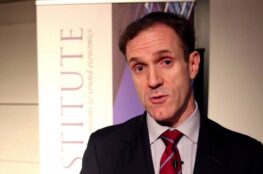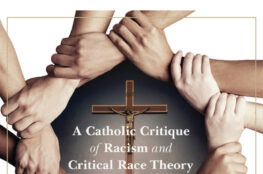The Tradinista project has been thoroughly discredited, but apparently they didn’t get the message. Matthew Shadle, writing over at Political Theology Today, shreds the Tradinistas’ attempt to wed their idiosyncratic and over-broad iteration of socialism with Catholic social teaching by uncloaking their bait-and-switch tactics while also calling into question the workability of their proposals. It will be interesting to see whether or not they respond to Shadle’s analysis. Like most ideologically charged movements, the Tradinistas are interested in neither reasoned disputation nor empirical analysis; all that matters is their ideas and how dare anyone tell them they’re wrong. In fact, despite an avalanche of criticism, the Tradinistas haven’t said much of anything at all. They’re just pushing on ahead, hoping nobody will notice the design flaws in both their so-called manifesto and three-part defense of “Catholic socialism.”
For instance, Jose Mena (who deserves some credit for using his real name), just penned a piece for The Catholic Herald’s blog that might lead some to believe that Tradinistas are a persecuted and misunderstood lot whose mission simply “combines socialist ideas with Catholic orthodoxy.” The problem, of course, is that it’s far from clear this is what the Tradinistas are up to, and so far it doesn’t appear as if they’ve convinced anyone but themselves. Why? Because for nearly two centuries, the Catholic Church has forcefully opposed socialism, an inconvenient truth which shifts to them the burden of proving that the socialism they claim to support is compatible with the Church’s magisterium. Mena doesn’t bother with any of this, of course. Instead, he tries to bolster what the Tradinistas are doing through another bait-and-switch by comparing them to Dorothy Day and Cesar Chavez, neither of whom were socialists per se. (In fact, Mena even acknowledges that Day was a Distributist.)
As for the rest of Mena’s piece, it’s a bit of a mess. For instance, Mena says that he identifies with millennials who are burdened by debt, can’t find a job, and live with their parents while failing to make mention of the fact that he graduated from Princeton in 2012 and worked for an institution run by the federal government. (If only all those he claims to be in solidarity with had it so hard!) He then maintains that “the Church has no answers” to the plight of the millennials before maintaining that he and the Tradinistas “do nothing more than follow Pope Francis.” If the Church has no answers, then why follow the Pope? While Mena is right to acknowledge that the Church is “torn by the confusions of the Second Vatican Council,” he seems to miss the fact that openly dissenting from what the Church has always taught concerning property, the market, labor, and subsidiarity is only going to add to this confusion.
The problems don’t end there. Mena, for reasons which are lost on me, believes the Cold War “drove Catholics right and left into the arms of capital,” “result[ing] [in] . . . a widespread embrace of American civic religion[.]” He fails to acknowledge that as early as the 19th Century, American Catholics were tempted by liberalism, pluralism, and separationism—temptations Pope Leo XIII warned against on several occasions. As Mena’s remark about the “arms of capital,” it’s hard to understand what he is driving at. Does Mena mean that American Catholics came to embrace and uphold capitalism over the course of the last century? Certainly many did, but not all. As for capitalism itself, living under it doesn’t necessarily mean endorsing it, which is why Leo XIII, St. Pius X, and Pius XI all issued directives concerning the relationship between labor and capital while hoping for a more authentically Catholic economic order to rise up.
Not surprisingly, Mena conveniently ignores the fact that for more than a century, faithful Catholics have consistently opposed all forms of liberalism—social, political, economic, and religious—without ever feeling compelled to posture socialist for what they call in the pro-wrestling industry “a cheap pop.” The heirs of the Distributists and Solidarists of the early-to-mid 20th Century—Belloc, Chesterton, Pesch—and the great social thinkers of that era as well—Fahey, Cahill, and Ousset—can be found today within traditional Catholic circles. The Society of St. Pius X has for nearly half-a-century kept alive the fight against liberalism while promoting the Church’s authentic social magisterium. More recently, integralist projects such as The Josias have sought to reclaim that magisterium and bolster it with original commentaries and translations from works which have, sadly, fallen by the wayside.
What comes next for the Tradinistas? Heaven only knows. Without much in the way of practical guidance or internal coherency, hopefully they will depart as quickly as they came. I have my doubts, however. For the time being, the Tradinistas “look cool,” what with their cheap rip-off of communist symbolism and claims to be “edgy” and “dangerous.” I have to wonder how many of these self-professed Tradinistas have ever been involved in labor issues or know what it’s like to try and organize workers. As a friend of mine noted, the closest most of the Tradinista priv-kids have probably ever come to interacting with blue-collar workers is stiffing them on a tip. Who would have thought “the revolution” would be this banal?



